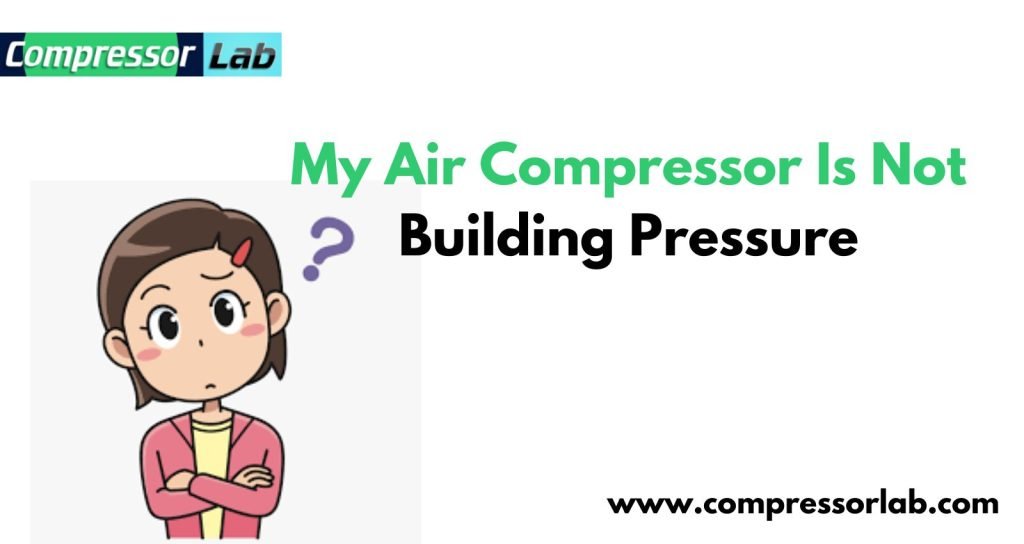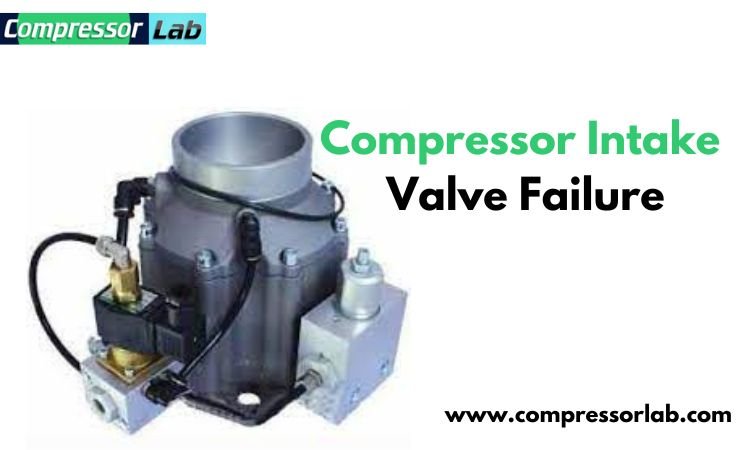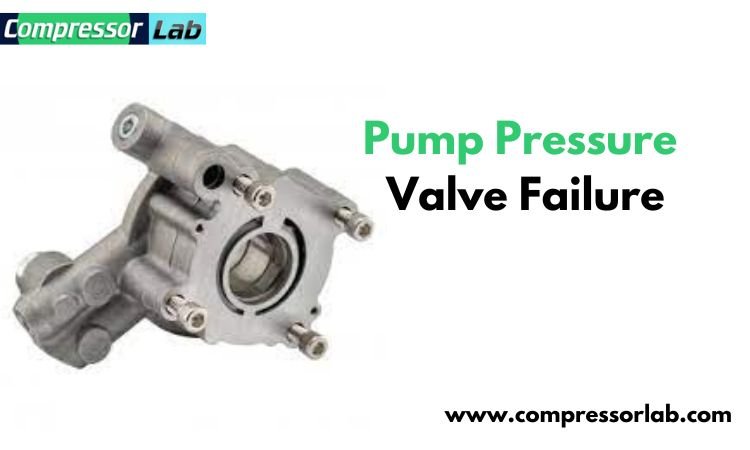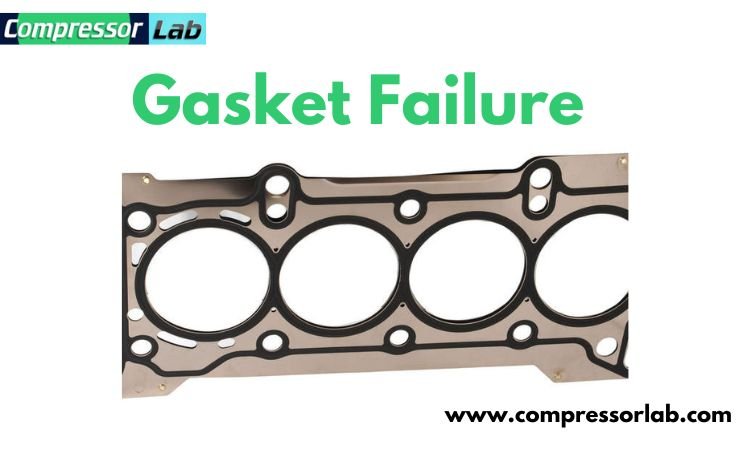
Are you relying on an air compressor for your daily tasks? I know it’s frustrating for you to find out the machine does not work properly. Those issues can prevent you from completing tasks efficiently and even make your work standstill. You may think that “my air compressor is not building pressure”.
So you must be searching for why my air compressor is not building pressure. Well, there can be several possible causes for an air compressor’s lack of pressure buildup. And understanding some of the most common issues and troubleshooting methods, you can solve them quickly.
In this article, I have mentioned some reasons why your air compressor is not building pressure. Also, this comprehensive guide will provide some best tips for diagnosing and resolving the issue. Let’s dive in and find the most common problem with quick-fix solutions of why the compressor is not building pressure.
- Compressor Intake Valve Failure

When the air intake valve malfunctions, it creates a problem similar to a pump pressure or flapper valve malfunction. If the intake valve malfunctions, the compressor will suck in the air. But the air will flow through the defective valve instead of being compressed.
Some air may enter the tank, while the remainder may exit through the intake valve. This could lead to the buildup of pressure, which might eventually stop at a particular point.
In addition, you can examine the intake port by removing the air filter to identify this issue. Once you remove it, the filter housing and the compressor will run. Then you can cautiously place your hand close to the intake. If you check the intake drawing air in, it is not that the valves are responsible for the problem. And if you sense air release from the port, the pump pressure valves will cause the issue.
How to fix:
Usually, to resolve this issue with smaller air compressors, you need to replace the valve plate. Although only the valves can be replaced in some compressors, this depends on your specific compressor. The challenge is that obtaining the latest valve plates for small-size machines can be difficult. However, it’s worth conducting an online look using your device’s model to see if you can find any.
- Pump Pressure Valve Failure

If the pressure valve of the air compressor doesn’t work, then the pressure won’t build up even though the machine is running continuously.
Or sometimes, this happens when the compressor tank increases a specific amount of pressure, but the compressor motors constantly run without adding built-up pressure.
If the pressure valve or switch is causing the issue, air will be drawn in during the compression process. But the malfunctioning valve or switch will release that air when the compressor tries to draw more air in. As a result, the air’s back-and-forth flow will block pressure accumulation.
To find the problem, you must first turn off the compressor and empty the tank. Then, remove the line from the piston head and restart the compressor. Try to obstruct the airflow from the pressure port with an object (not a body part such as a hand or finger) and see if you can do so effortlessly. And the compressor pump pressure valve will likely be the problem if you can easily block the flow.
How to fix:
Adjusting this problem typically involves replacing or rebuilding the pump, which demands a certain level of proficiency. But this may not be the cost effecting solution based on how extensively it has been used and how expensive it is.
- Gasket Failure

Air compressors use valve plates to house the intake and pressure valves divided by a seal. And all other compressor components will operate as intended if the seal is defective. But the air will escape through the faulty seal, resulting in the failure of the pressure buildup process.
It can be challenging to detect this issue since it usually occurs when the pressure reaches a specific point. When the gasket can’t handle the pressure anymore, it leaks.
Regrettably, disassembling the pump is expected to harm the gasket, making a physical examination futile. Consequently, if you choose to pull apart the pump, it’s best to change the gasket, even if you’re uncertain whether it’s the root of the problem.
How to fix:
The difficulty in identifying gasket failure has been previously discussed. The recommended action is to replace the gasket and any other defective pump parts during repair. Nevertheless, if the cost of repairing the compressor exceeds your budget, it may be more practical to buy a new one instead.
- Broken Piston Seal

An air compressor uses a pump to draw air into the system. This pump is equipped with piston rings, which act as barriers to prevent excess oil from entering the cylinders of the compressor.
If the piston seals in the compressor break down, it will be difficult for the pump to maintain the necessary pressure for optimal compression. This pressure loss will make it more challenging for the compressor to compress air effectively. And it can save the machine from increasing air pressure.
If you’re experiencing this problem, you can diagnose it by locating the oil intake tube (if there is one). Also, you can identify if any air or oil is coming out of it. If you notice a continuous stream of air coming from the oil fill tube, this typically indicates that the piston ring is beginning to fail.
How to fix:
When the seals in the piston are not working correctly, replacing or rebuilding the pump is the most effective solution. One possible approach is to disassemble the pump and install new rings. In case you choose this process, replacing other parts, like the valve plate and gasket kit, is also necessary.
- The Tank Check Valve Is Compromised

The check valve of an air compressor is a fundamental part that prevents air from flowing back from the tank. When the compressor operates, the air goes through the pump head, the line, and into the tank. The check valve sits between the tank and the line. As the air passes through the valve, a flap remains open. If the compressor shuts off, the flap has to block to save air from escaping.
In this situation, you can check valve is damaged; it may either allow air to escape from the tank or block the incoming airflow into the tank.
Inspect the unloader valve while the compressor is inactive to identify this problem. If the unloader valve constantly releases air, it typically indicates a malfunction in the check valve.
How to fix:
If the check valve on a tank is broken, it is time to replace the valve to fix the problem. This is usually a simple task that involves only the cost of buying a new check valve.
Final Words
The malfunction with the air compressor can be depressing. If the machine does not build pressure, you can’t use it until finding the problem and fix it. And there are some commonplace that can be caused, like pump pressure and intake valve failure, gasket problem, and more. Also, you can follow my guide mentioned above to check and repair this issue.
FAQs
How do you fix a compressor that won’t build pressure?
First, to fix a compressor that won’t build pressure, check if the intake filter is clean and not clogged. And inspect pressure switch is working correctly. Also, analyze the valve plate and piston rings for damage or wear. Finally, ensure the tank pressure is not already at its limit and adjust the pressure regulator if needed.
What is the most common reason for air compressor failure?
Leaks throughout the system frequently cause air compressor failures. Such air leaks can occur due to damage to components gradually.
How much time does it take for the air compressor to build pressure?
If the tank is more extensive, it will require more compressed air to fill it. Usually, filling the tank should take no more than 2-5 minutes. And most common DIY compressors usually have a pressure of 8 bar or 115 psi, which is the pressure they are set at when purchased.
How do I pressurize an air compressor?
To pressurize an air compressor, you need to close the compressor’s intake valve, turn it on, and wait for the tank to fill with air. The pressure switches auto-turn off the compressor when it arrives at the desired pressure level. Then you can adjust the pressure using the pressure switch or regulator.


Recent Comments